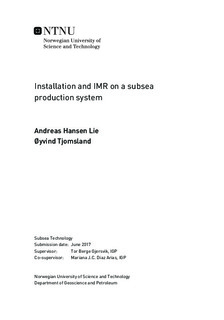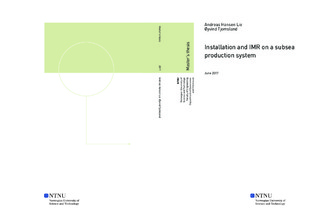| dc.description.abstract | In recent years, the focus on increased production and reducing operating costs has become an important goal for the oil and gas industry. This trend is likely to be even more important in the future. Installation and maintenance of underwater production and processing facilities is expensive, complicated and can cause problems. Solutions that facilitate easier maintenance operations, are an essential factor that reduces operating costs over time.
SUBPRO is a combined research program between the Norwegian University of Science and Technology and industry partners, that are developing a concept to mitigate these problems. This concept is called "Subsea Gate Box", where one of the goals is to increase production from individual wells within the same well network. To achieve this, each well will be prepared for further processing, before they are commingled in a common manifold. Thereby, each well is to a higher degree accommodated with its own processing equipment.
This thesis addresses modular architecture, and investigates solutions that can contribute to achieve a versatile process facility, as well as facilitating for an efficient installation, inspection, maintenance, and repair of the Gate Box system. In order to identify important factors that are related to these subjects, and than be able to come with some suggestions, relevant theory and "state of the art"-solutions for existing systems have been investigated. Based on this, a number of requirements and specifications have been stated. Furthermore, these requirements and specifications are the basis for the solutions presented in two different cases, which contain various module architecture and connection systems. The two cases were evaluated according to the given specifications in order to identify which one of them fits the requirements best.
Important factors that were considered includes; modular interfaces, system redundancy, access to equipment, and possibility for easy replacement of equipment modules. The survey shows that both cases have their advantages and disadvantages, but the layout that allows fast disconnection and replacement of modules, appears to be the best solution. | |

